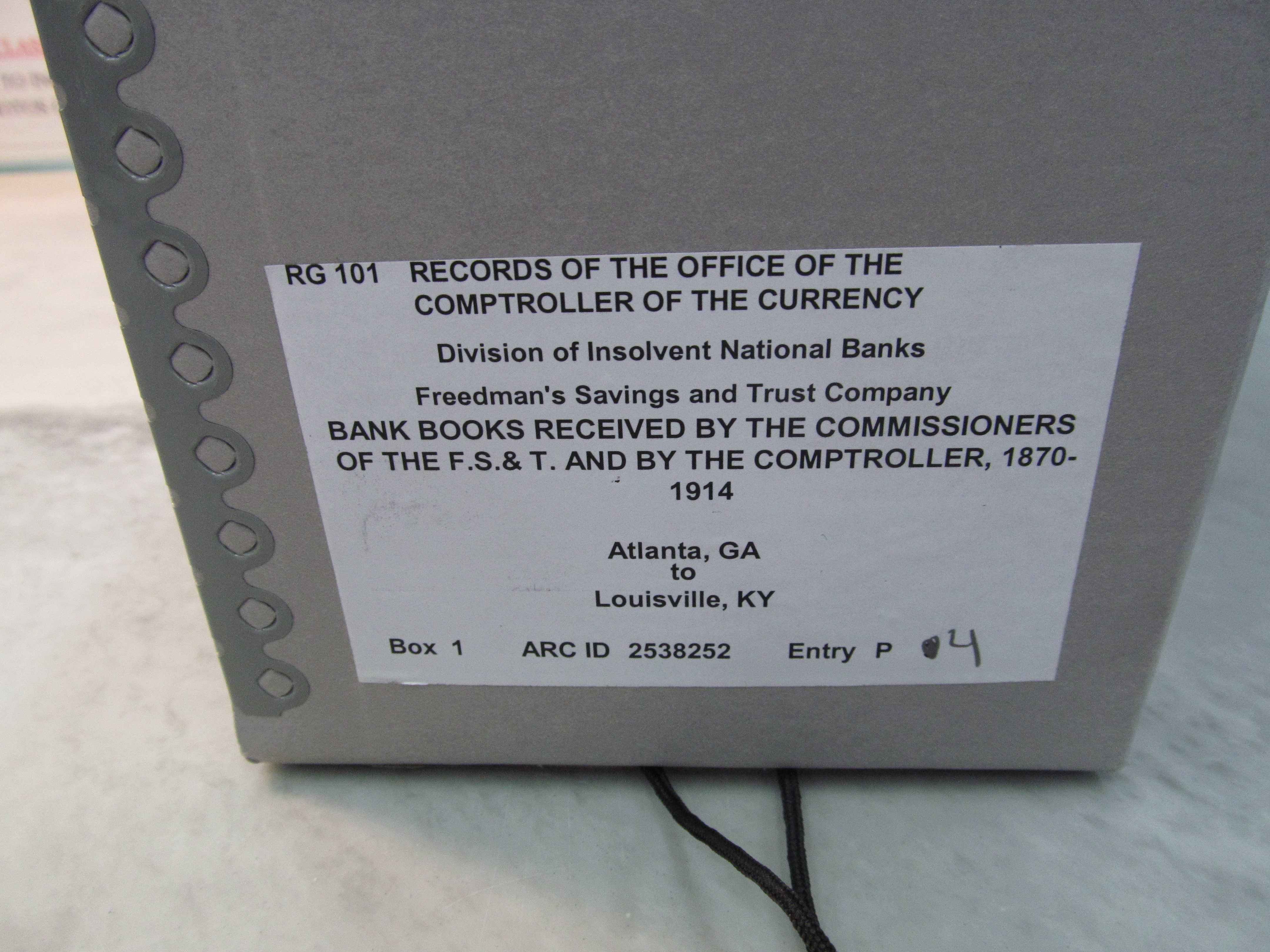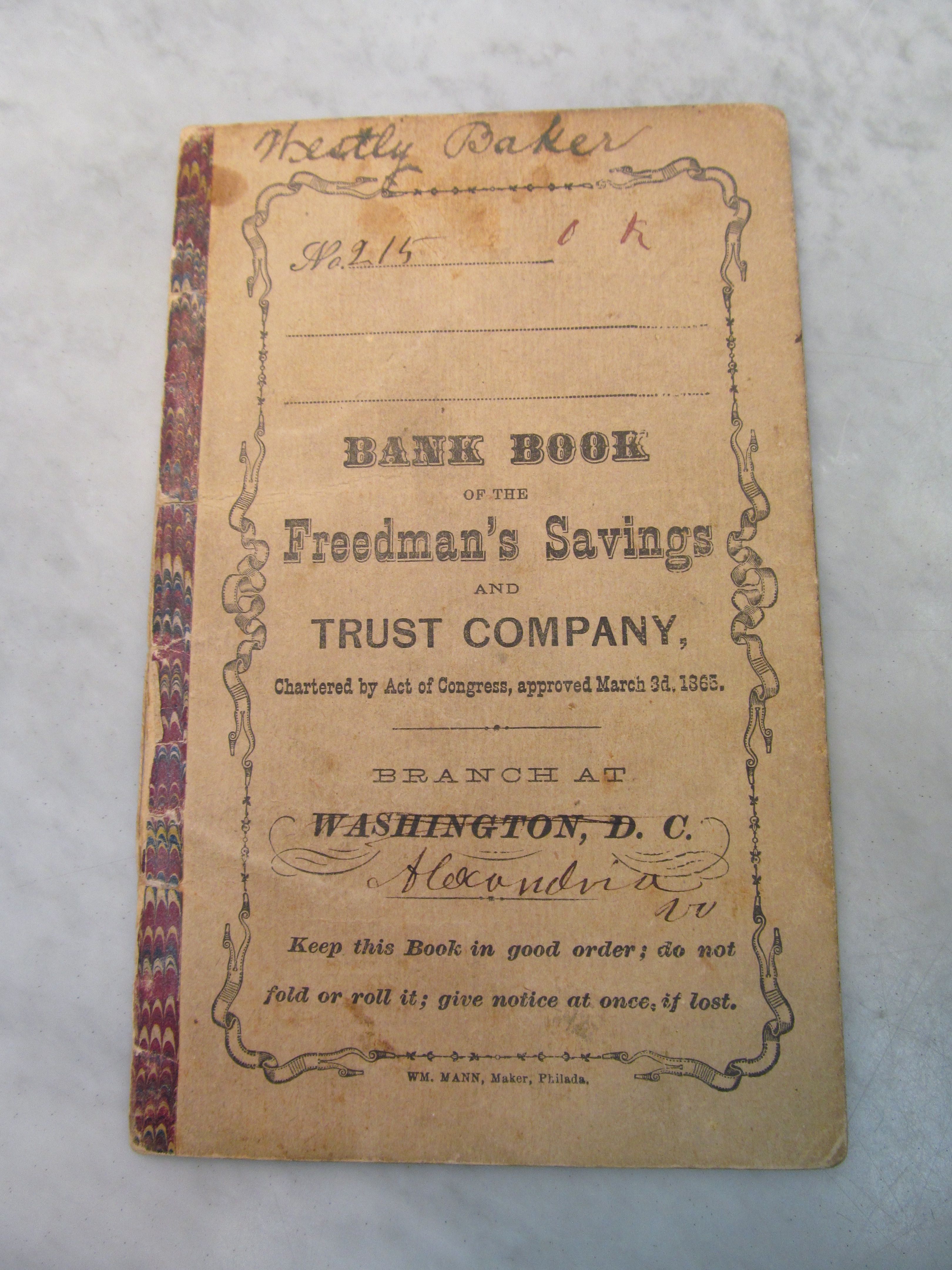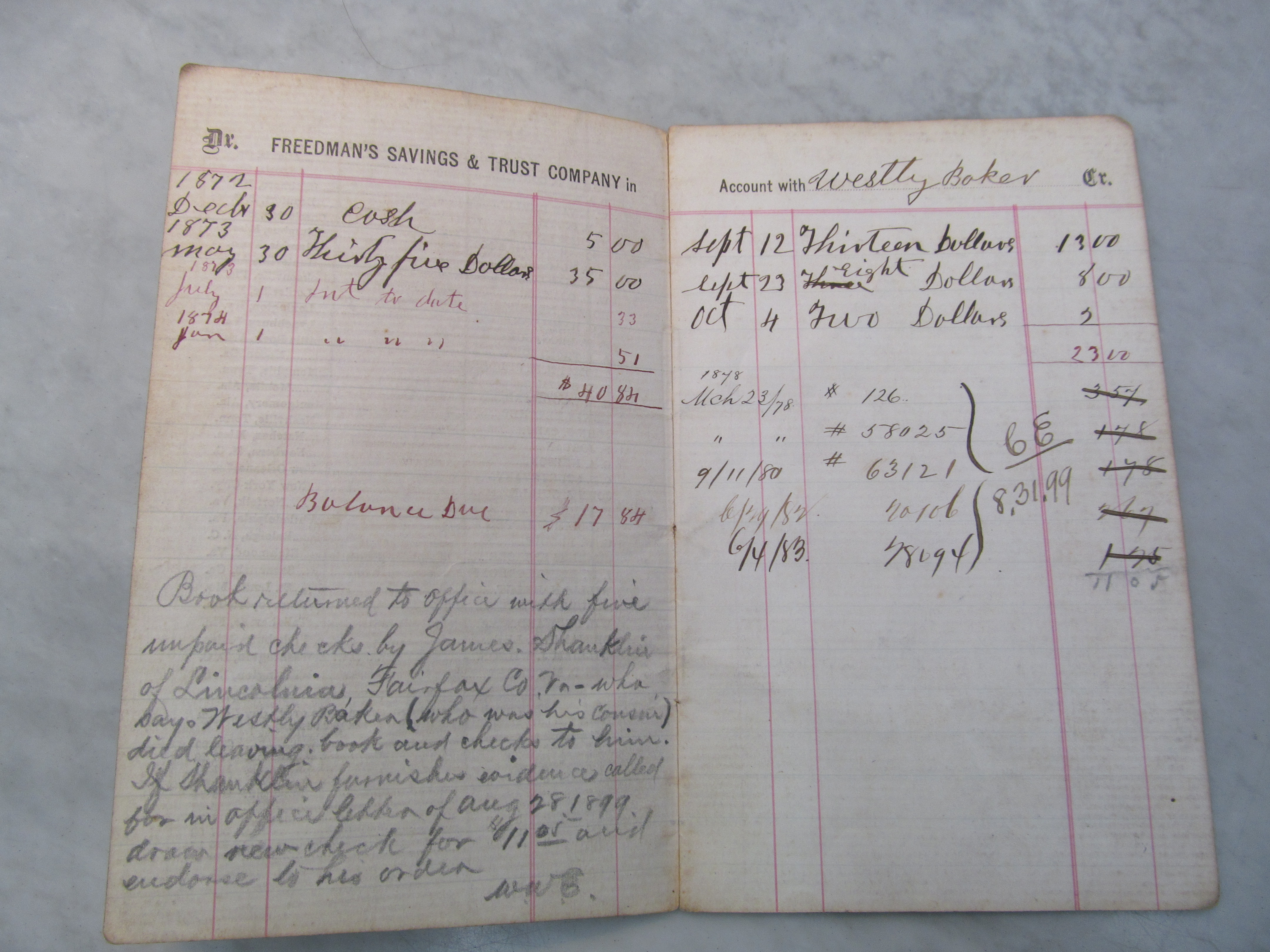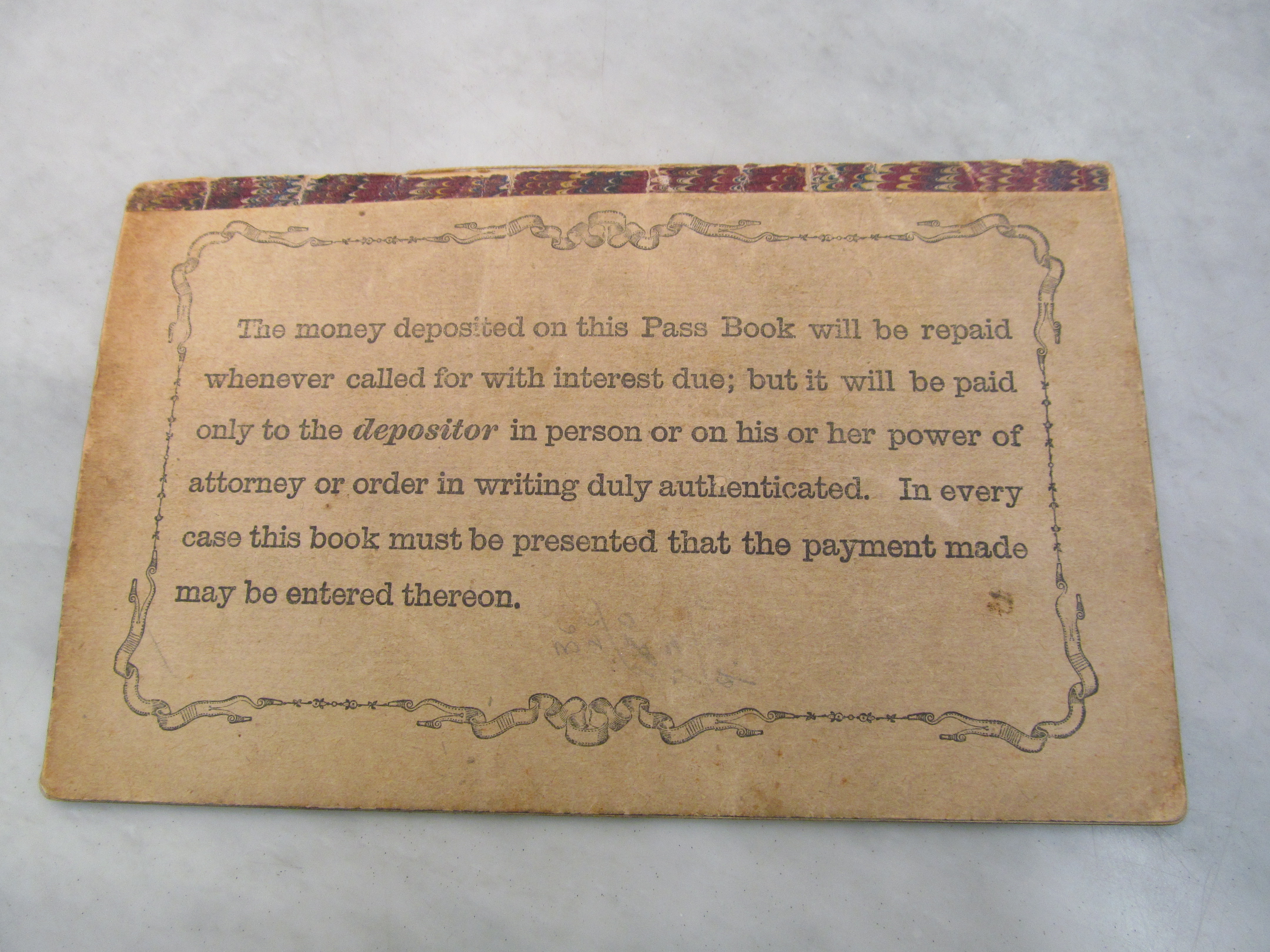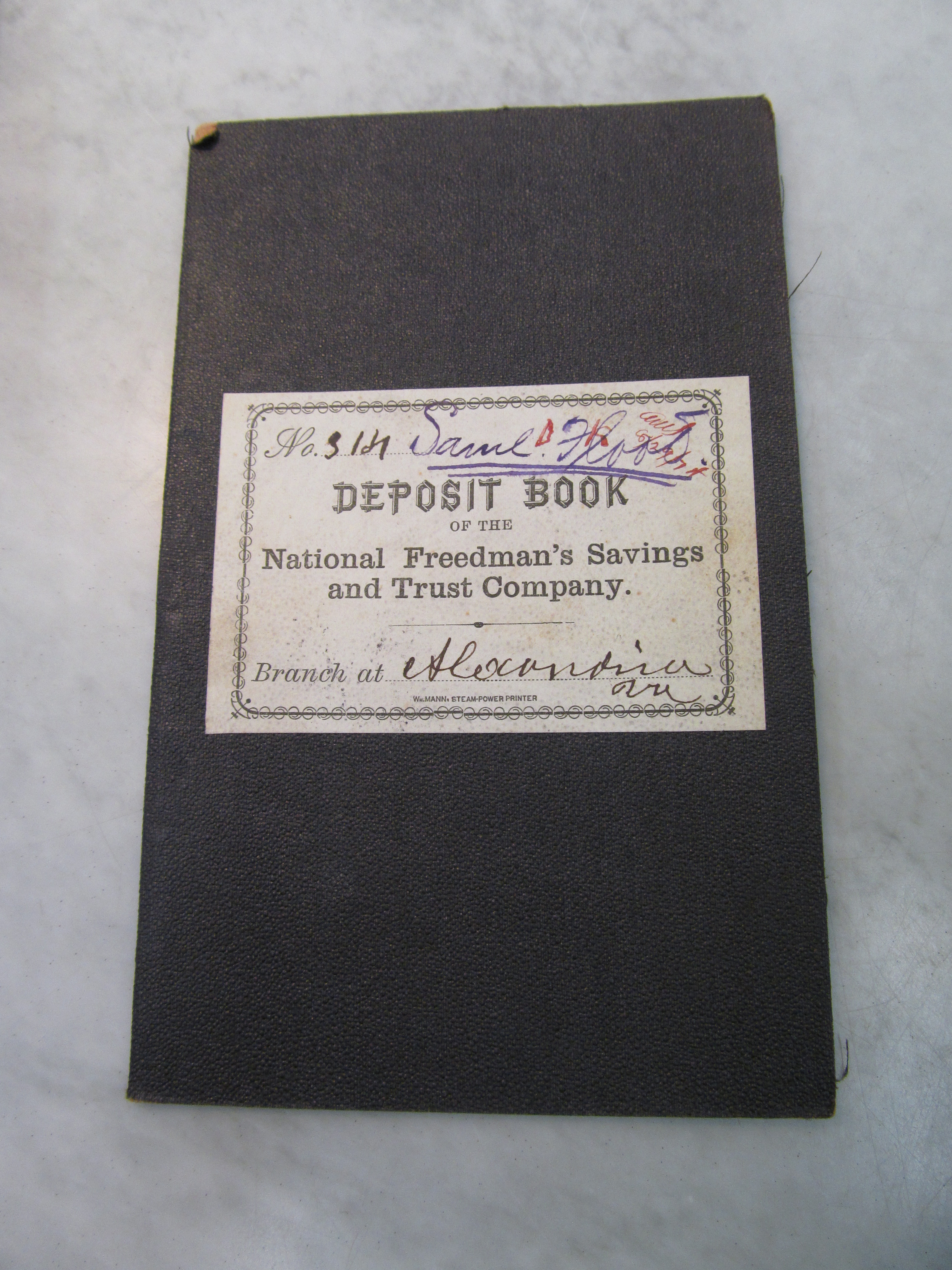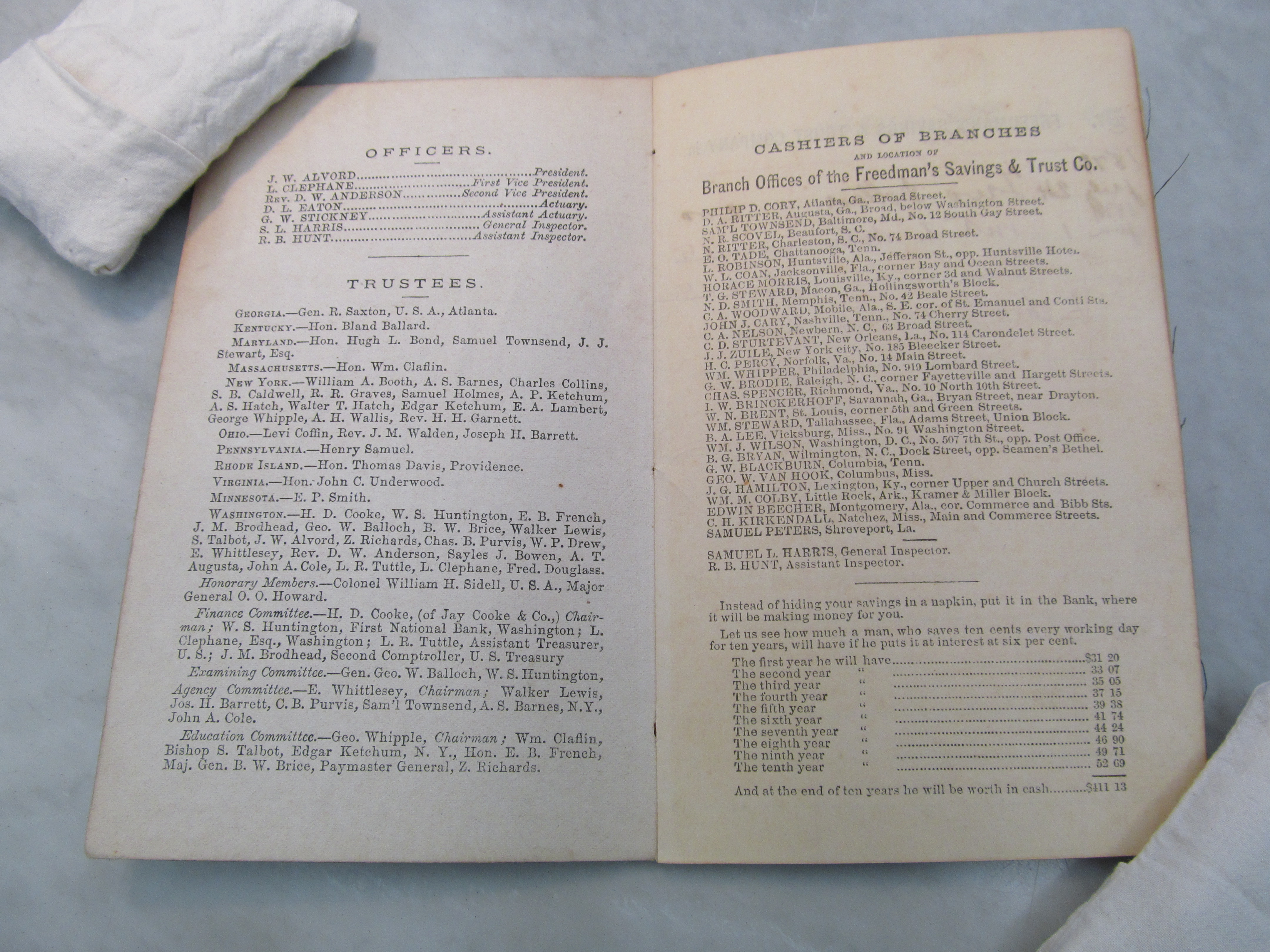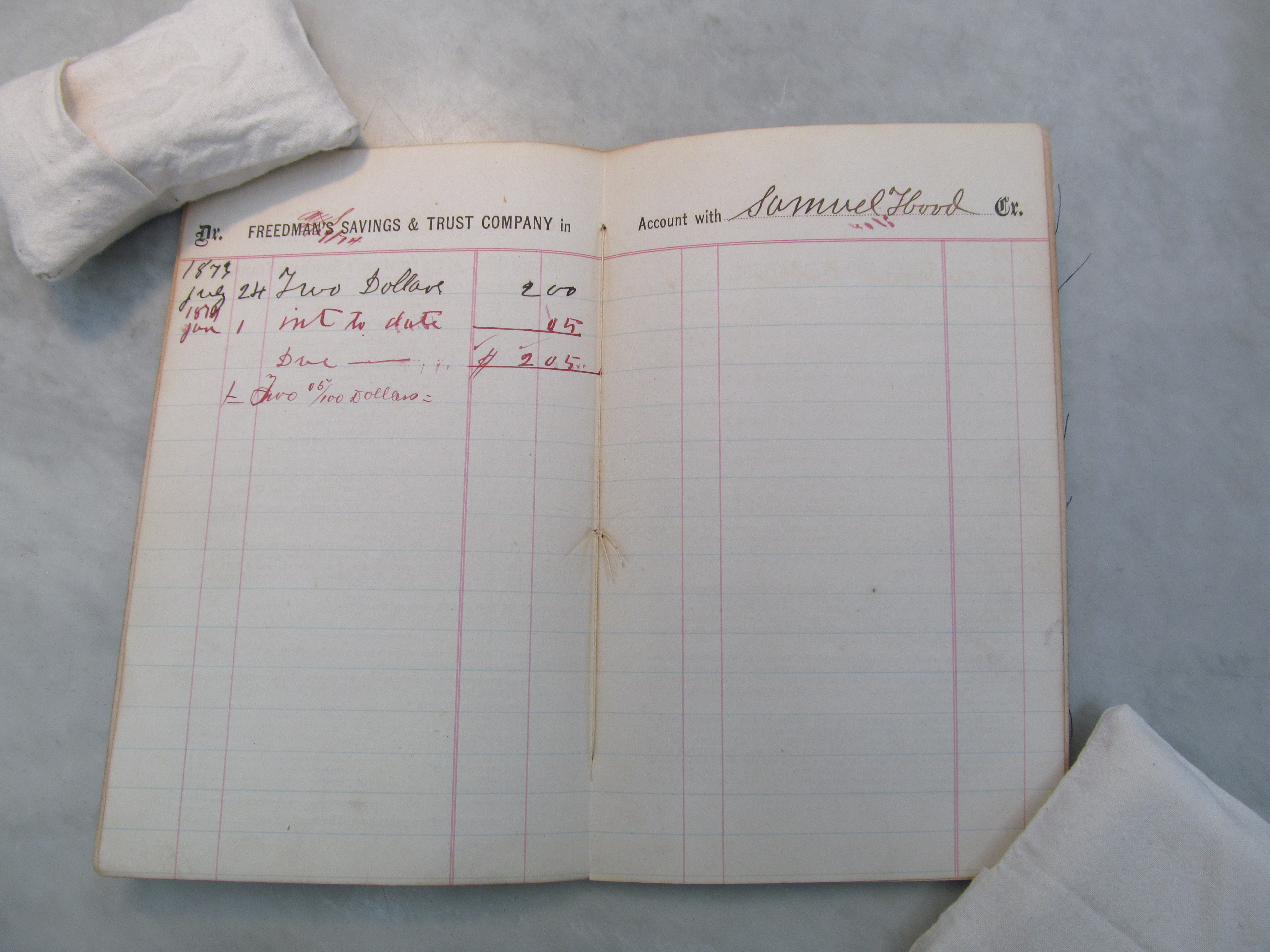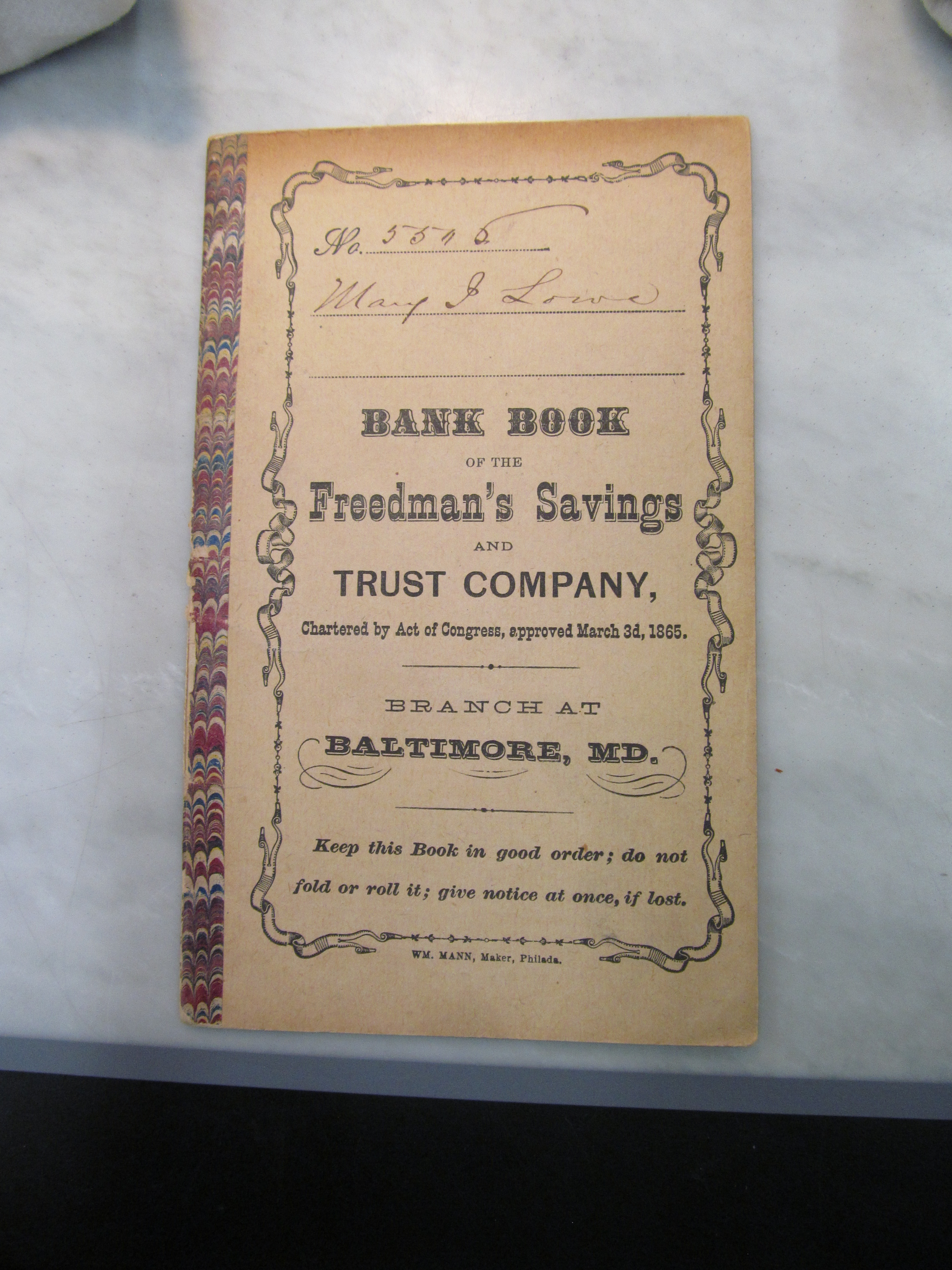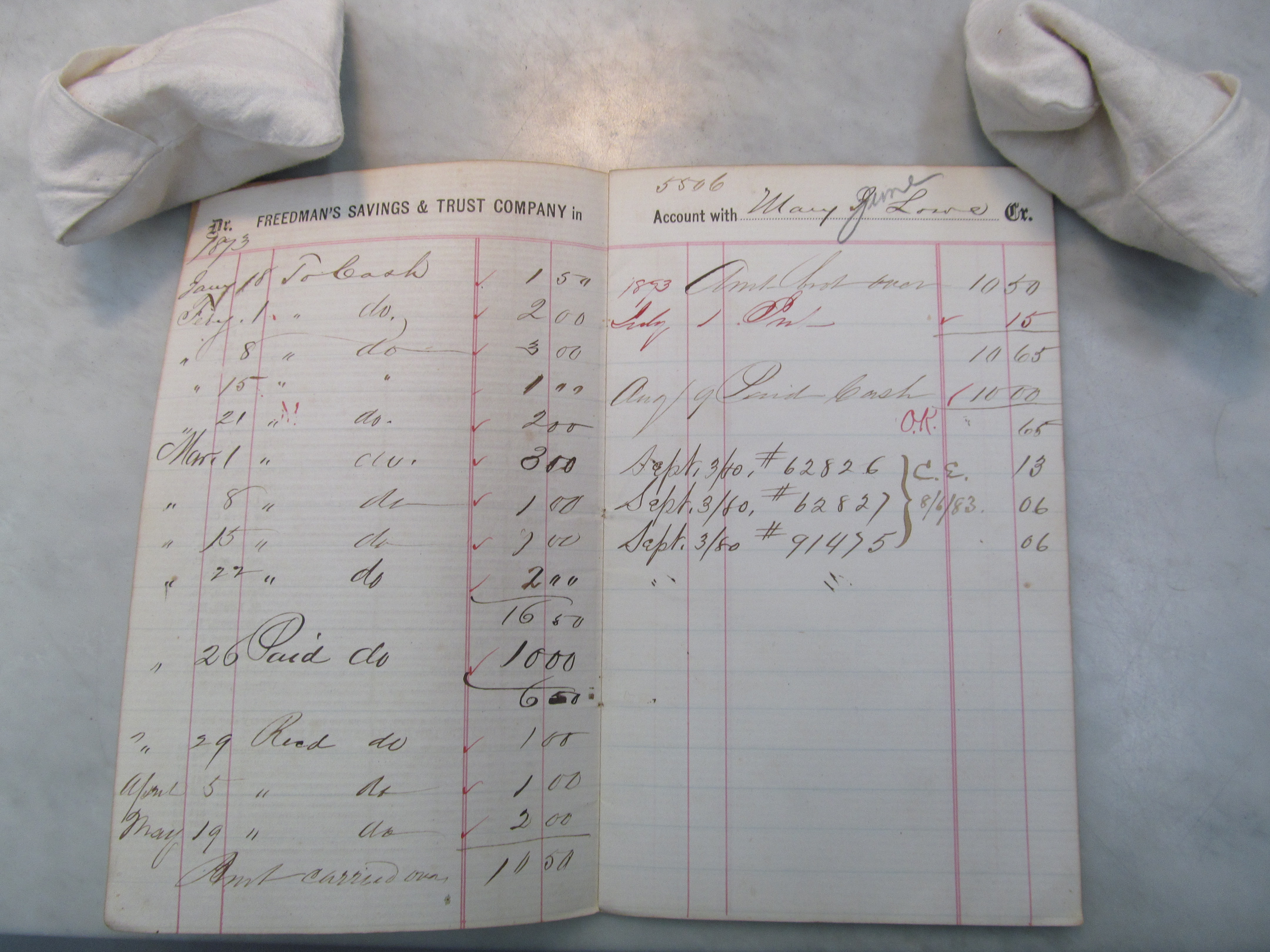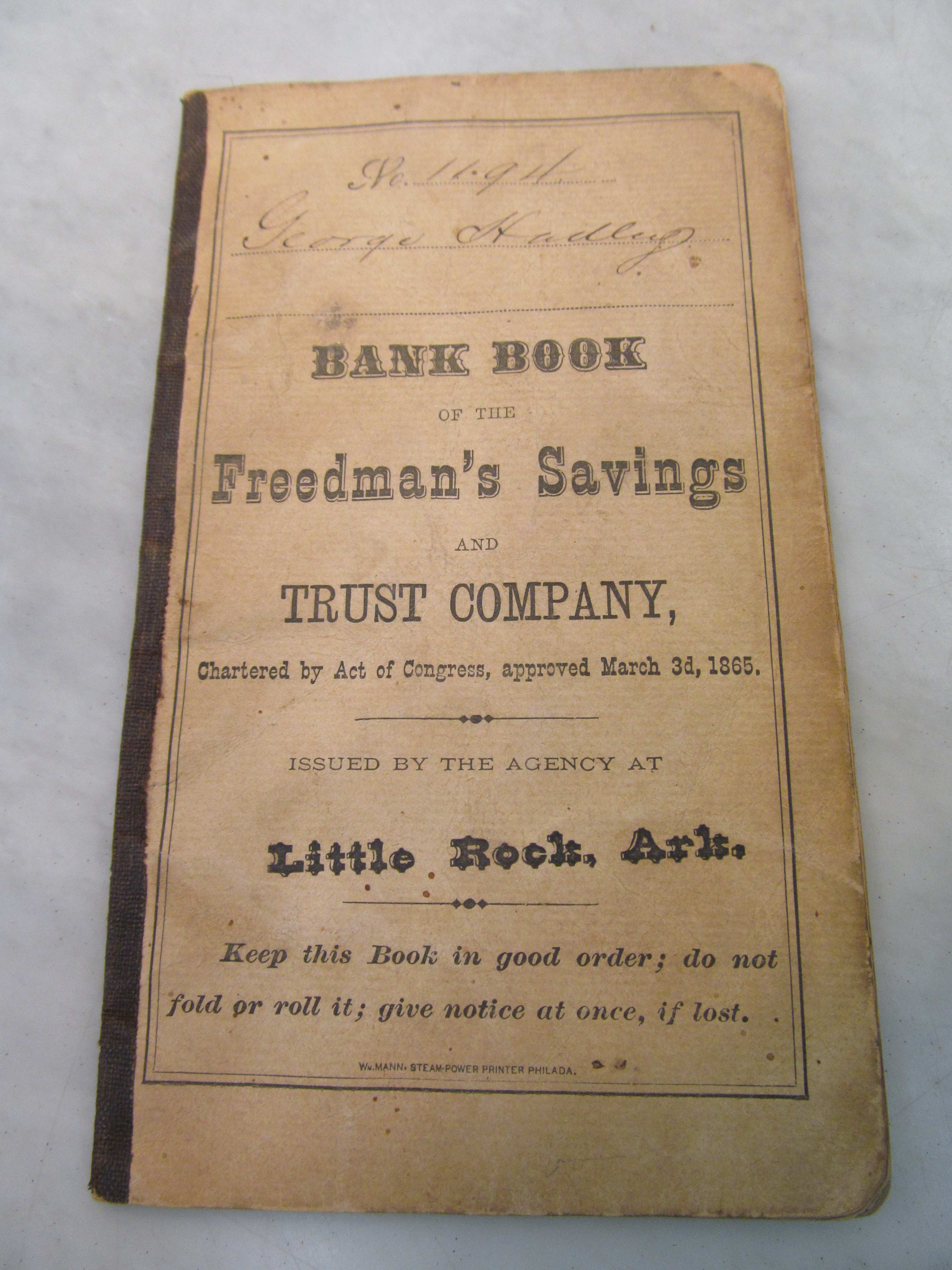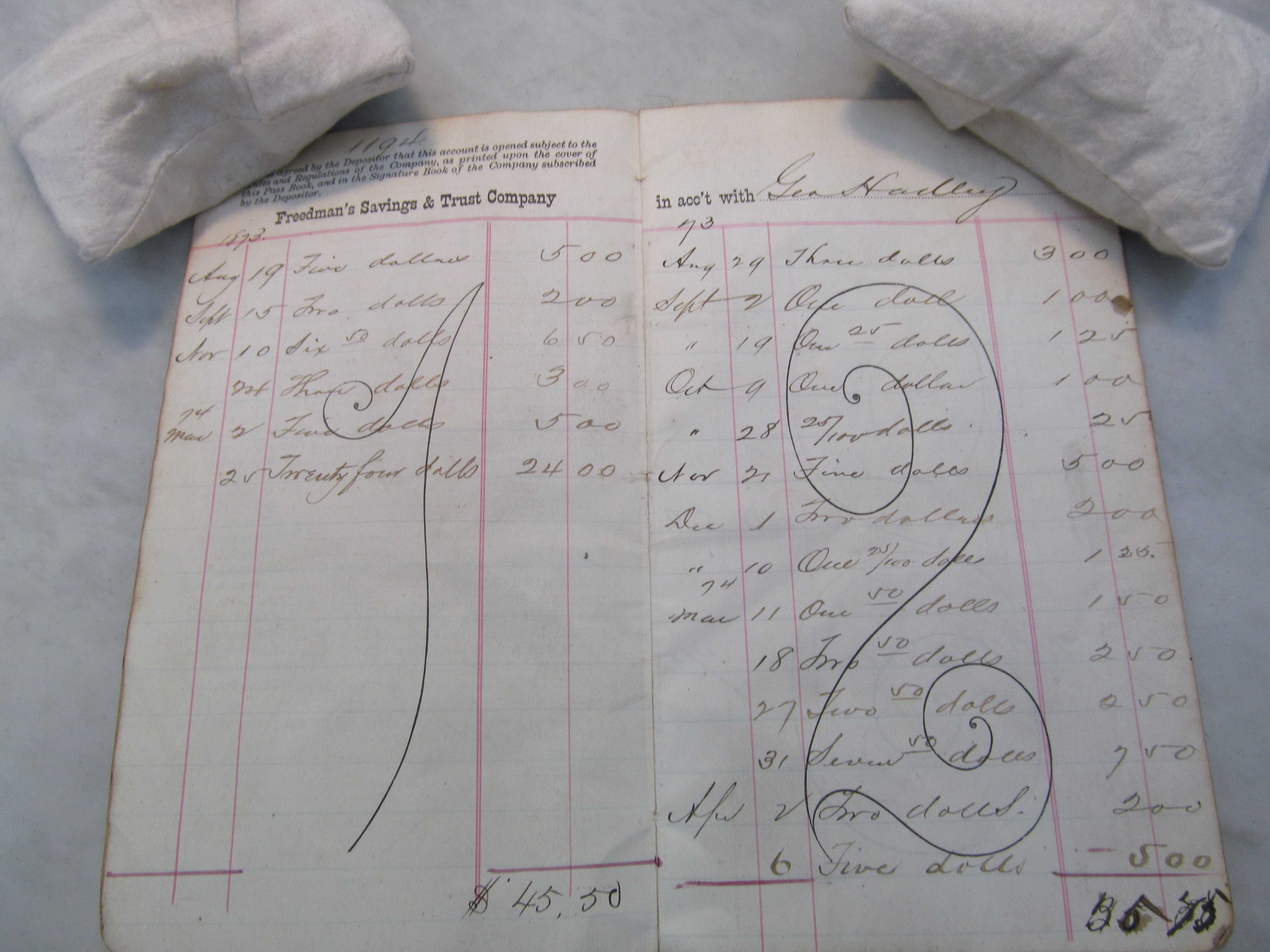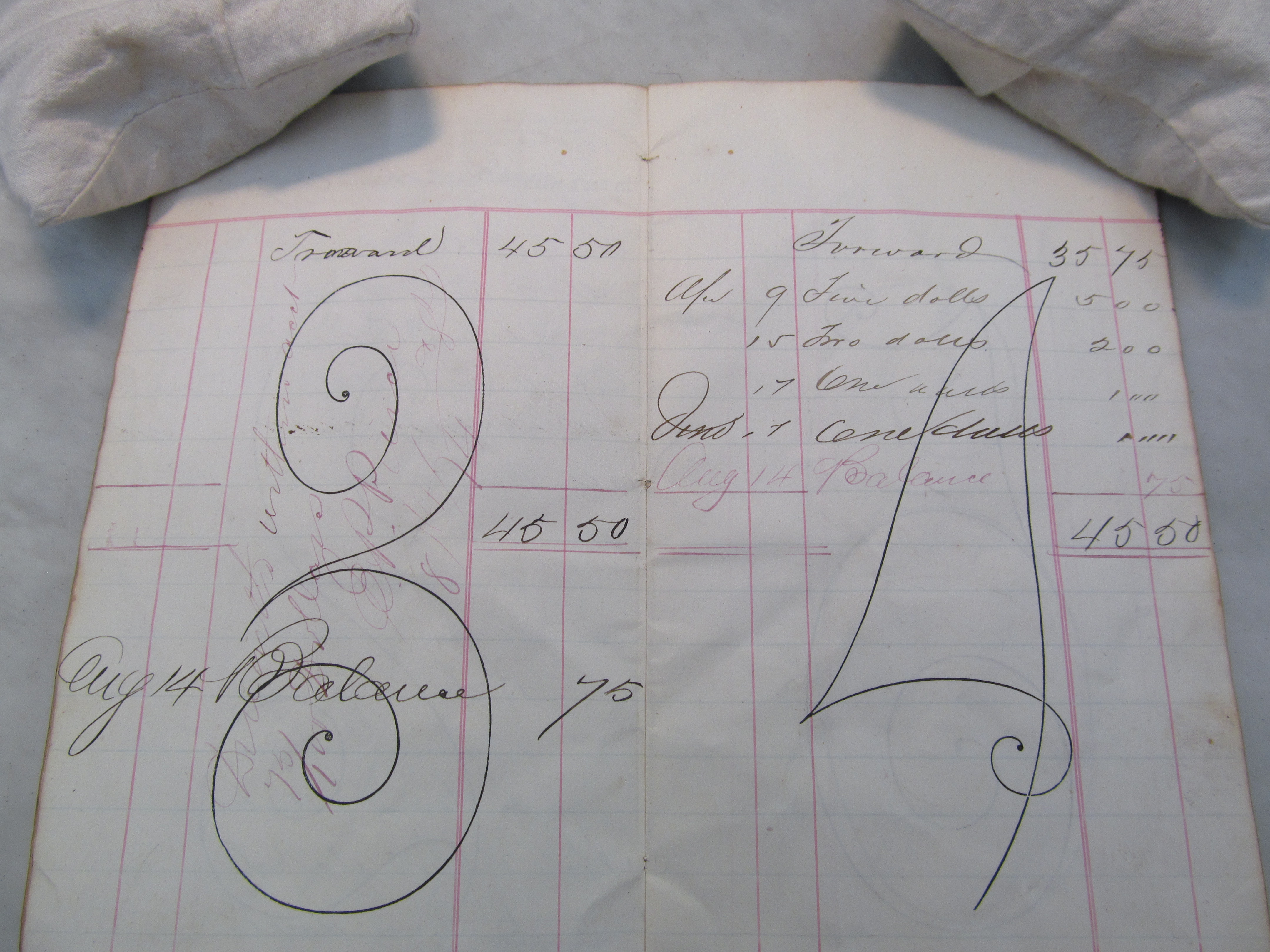Passbooks were used by account holders to track their ongoing balances, much like a modern-day checkbook registers. The existing passbooks were collected as part of the effort to repay account holders following the bank’s failure. The physical passbooks are available at the National Archive in a four-box set. (National Archives and Records Administration, Record Group 101; ARC ID 2538252;)
The passbooks appear to be a random sampling of account holders across multiple banks, and the National Archives collection is in good condition. We obtained photographs in person at the National Archives. The result is a rich and thorough listing of every available transaction that exists in the archive. A microfilm copy of these records, which appears to have been imaged sometime in the 1970s, has been collected in Lester and Gutberlet (2005). However, this microfilm is actually incomplete, and the images are often blurry and difficult to read. To our knowledge, the high quality scans presented here represent the full scope of the passbook records contained in the archive, and the collection for Traweek and Wardlaw (2020) subsumes this earlier microfilm.
Passbook Transcription
The passbooks appear to be a random sampling of account holders across multiple banks, and the National Archives collection is in good condition. To keep track of the passbook location, we created a unique identifier for each book. The passbooks are also logged by the four distinct boxes housed at the archives. Photos were taken chronologically through each passbook; thus, the file number of each picture can be used as the identifier. Together, this creates a box number/photo number identifier that is unique for each passbook.
Depositor passbooks contain a cover page, several pages of general bank rules, and several ledger pages for the owner to record banking transactions. When open to the ledger pages, the left side of the passbook was typically used for deposits and the right side for withdrawals. Each deposit book contained 12 pages, with eight pages for recording of activities. Once a passbook became full of transactions (or in the event of a lost passbook), the bank would issue another passbook. These passbooks usually have ``balance forward’’ written on the first page, and transactions continue beneath that. There are a total of 536 passbooks.
We photographed the relevant pages of each book, including the front page, which contains the depositor account number, depositor, name, and the branch. We also photographed relevant pages within the passbook, omitting pages containing no entries. Thus, for each available passbook, we have recorded the name of the depositor, the account number, the branch location, and the dates and amounts of all legible deposits. We also note whether the first deposit is a balance forward or an initial deposit.
Note that if a passbook has a balance forward, then the deposits and withdrawals will not demonstrate the entire history of the account. Thus, for some cities, the sum of the withdrawals exceeds the sum of the deposits due to the balance-forward portion of the deposit books.
The transcribed data is available here:
Document Scans
The following zip files contain high quality scans of each of the four boxes of records contained in the national archives. Note that these files are quite large and may take a while to download if you are on a slow connection.
- Box 1 (zip file) 1.6Gb
- Box 2 (zip file) 489Mb
- Box 3 (zip file) 774Mb
- Box 4 (zip file) 303Mb
